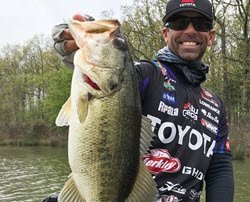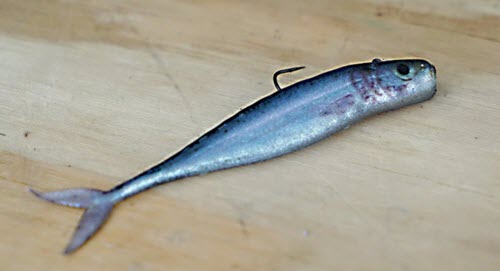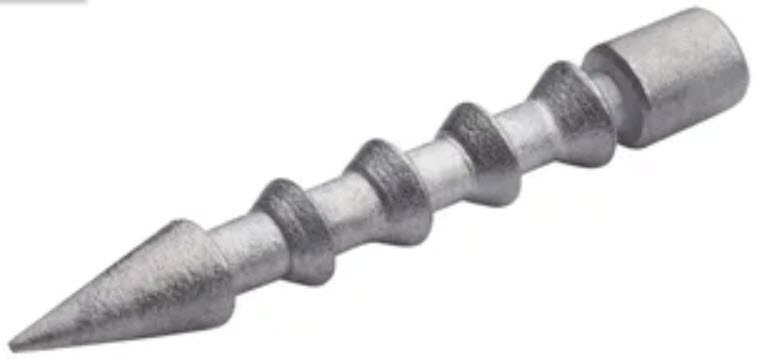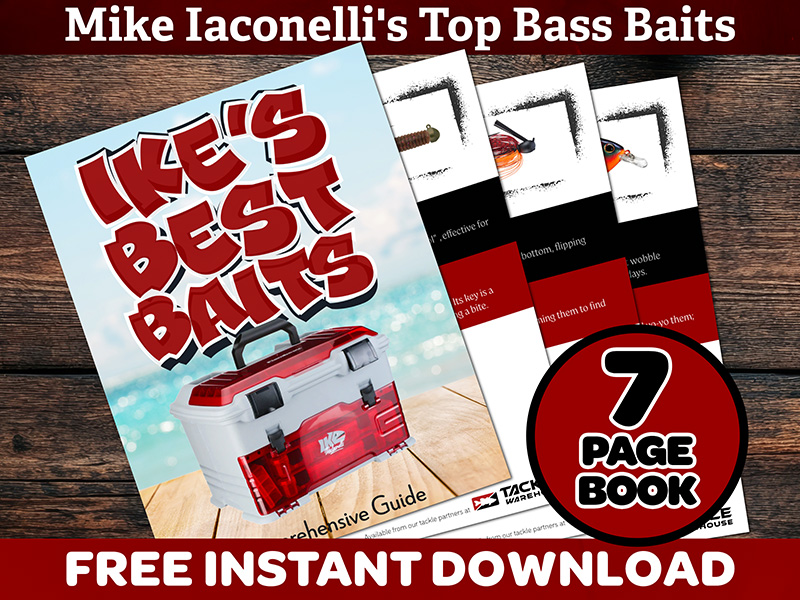
The spine rig is a finesse rig that’s been around for a while. It came from Japan and is popular on the West Coast. But, they’ve all been pretty darn good at keeping it to themselves. I’m going to fix that with this blog. I’m giving it up!
The beauty of this rig is that it’ll allow a minnow bait to spiral erratically on the fall but, when you fish it up off the bottom, it stays horizontal just like a minnow. It really does look like the real thing in the water.
Let’s get started…
There are three parts to a spine rig
- We’ll start with a minnow-like plastic bait. There are several good ones around. I like three of them — the Berkley Powerbait Pro Twitch Tail Minnow in the 3-inch size, the Berkley Powerbait Minnow in the 3 or 4-inch size and the new Berkley Powerbait The Champ Jerk Minnow in the 3.4-inch size.

Berkley Powerbait Pro Twitchtail Minnow Any of these will work. They all have a great minnow-like profile. The Champ has a vertical tail that’s in line with the body of the bait. That makes it different from the other two because it’s profiled like the real thing.

Berkley Powerbait Minnow Make your choice based on which one most closely matches the hatch. They all come in dozens of colors. One of them will match anything that swims.
- Next is a jig-style hook. It’s got to have a 90 degree bend in the shank just below the eye. Any hook that’s made to pour jigs will work as long as it’s razor sharp and strong. I like the No. 1 and No. 2 sizes best but you can use anything from a No. 2 on up to a 3/0.
- The last thing is a weight. I use the VMC Neko Weights. If you use something else, make sure it’s lead because we’re going to cut it off when we make our spine rig. Don’t even think about trying to cut tungsten. It doesn’t work. I know.
And, make sure you have several sizes and weights. You’ll want them so you can adjust the rate of fall.
Let’s put it together

- We’ll put the hook in the minnow first, but don’t put it in through the nose. Insert it in the back, just behind the eyes at about where the gills should be marked. Thread it through the back and back out. You want the hook point open. If you’ve done this right, the eye of the hook should be coming out of the minnow’s back above the gills and just behind the eyes.
- Next, cut a part of your weight off and insert the rest of it into the minnow straight through the nose. Push it all the way in so that it doesn’t show or stick out.

VMC Neko Weight When you’re done the minnow should be head-weighted. Change where you cut the weight to vary the rate of fall.
Make sure everything is straight and you’ll be good to go.
Fish it
Cast it out and let it fall. It’ll spiral like the old-fashioned tubes used to do back in the day. When you bring it up, off the bottom, it’ll hold horizontal in the water column. When you twitch it it’ll dart all over the place and act exactly like the real thing.
The spine rig is at its best in relatively clear water when it matches the hatch. Fish it around bluffs, deep docks, bridge pilings and anywhere there’s enough water to take advantage of its erratic spiraling fall. It’s good for schooling bass, too.
The secret’s out, bass-heads!

______________________________________________________________________________
Like Ike on Facebook, and follow him on Instagram for fishing and fun content.
Subscribe to Mike’s YouTube channel, Going Ike, to ensure you see every adventure video.
Return to Mike Iaconelli’s website



















